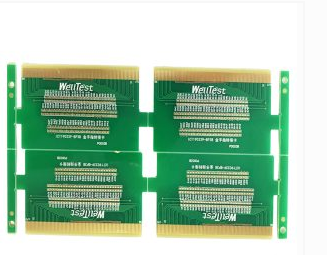The difference between PCB through holes, circuit board blind holes and circuit board buried holes
We all know that circuit boards are made up of layers of copper foil circuits, and the connections between different circuit layers rely on vias. This is because today's circuit boardmanufacturing uses drilled holes. Connecting to different circuit layers is just like connecting channels in a multi-layer underground waterway. The difference is that the purpose of the circuit board is to energize, so a layer of conductive material must be plated on its surface so that electrons can move between them. .
Generally, there are three types of PCB vias that we often see:
PCB through hole: PlatingThroughHole is referred to as PTH. This is the most common one. As long as you pick up the PCB and face the light, you can see that the bright hole is the PCB "through hole". This is also the simplest type of hole, because when making it, you only need to use a drill or a laser to directly drill the circuit board, and the cost is relatively cheap. But on the other hand, some circuit layers do not need to connect these PCB through holes. For example, we have a six-story house. I bought its third and fourth floors. I want to design a staircase inside that connects only the third floor. It can be between the fourth floor and the fourth floor. For me, the space on the fourth floor is invisibly used up by the original staircase connecting the first floor to the sixth floor. So although through holes are cheap, they sometimes use up more PCB space.

Circuit board blind hole: BlindViaHole. The blind hole of the circuit board refers to the via hole that is connected between the inner layers and is not visible on the surface of the finished board. The above-mentioned two types of holes are located in the inner layer of the circuit board, and are completed by a through-hole forming process before lamination, and several inner layers may be overlapped during the formation of the via.
The outermost circuit of the PCB is connected to the adjacent inner layer with electroplated holes. Because the opposite side cannot be seen, it is called "blind pass". In order to increase the space utilization of the PCB circuit layer, a "blind via" process has emerged. This production method requires special attention to the depth of the drilling (Z axis) to be just right. This method often causes difficulties in electroplating in the hole, so it is almost used by no manufacturer: it is also possible to place the circuit layer that needs to be connected in the individual circuit layer in advance. At that time, the holes should be drilled first, and then glued together, but a more precise positioning and alignment device is required.
Circuit board buried hole: BuriedholePCB internal connection of any circuit layer but not conducted to the outer layer. This process cannot be achieved by drilling after bonding. It must be drilled at the time of individual circuit layers. After the inner layer is partially bonded, it must be electroplated before it can be fully bonded. Compared with the original "through hole" and "Blind holes" take more time, so the price is the most expensive. This process is usually only used on high-density (HDI) circuit boards to increase the usable space of other circuit layers.
As a professional PCB circuit board supplier, Shenzhen Zhongke Circuit Technology Co., Ltd. focuses on high-precision double-sided/multilayer circuit boards, HDI boards, thick copper boards, blind buried vias, high-frequency circuit boards, and PCB proofing and small and medium batches Board production. Our delivery speed is faster at the same cost, and our cost is lower at the same delivery speed.